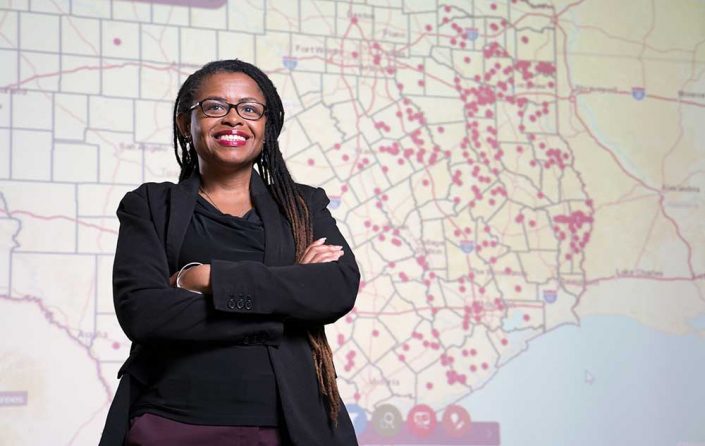Texas Freedom Colonies Project identifies historic black settlements

Image: Division of Marketing and Communications
As 1865 ushered in the end of the American Civil War, African-Americans, after centuries of enslavement, faced unfamiliar challenges with their newfound freedom. Straightaway, they assumed responsibility for living independently in environments still hostile to them.
Many of the four million freed African-Americans became sharecroppers on the plantations where they served formerly as slaves or other farms located elsewhere, and some set out for cities and towns. Approximately one million of them helped to establish self-sufficient, all-black settlements they called freedom colonies.
The exact number of freedom colonies existing in the United States is unknown but Andrea Roberts, assistant professor of urban planning in the College of Architecture at Texas A&M University, is helping to pioneer comprehensive documentation of those located in Texas with her Texas Freedom Colonies Project.
“Africans became hash marks on census reports when they reached America and were enslaved, leaving them, ultimately, without an understanding of their heritage or connection to their homeland,” Roberts said. “These self-sufficient freedom colonies were established under the most difficult of circumstances by industrious, intelligent and organized people acting much like current-day city planners — and some of their descendants are performing the work of preservationists today.”
The mission of the project is two-fold: to help African-American Texans reclaim their unrecognized and unrecorded heritage and empower city planners to plan and preserve communities with unprecedented knowledge about the freedom colonies.
“African-Americans created intentional communities independently, and these black settlements were not substandard wards, ghettos or black neighborhoods that black people were pushed to,” Roberts said. “When making land-use decisions, I want city planners to look at these places and recognize that groups of people, even though they might live all over the place, find them very important for many different reasons.”
Through the painstaking process of ethnographic and archival research, Roberts has found more than 550 freedom colonies established by the almost 200,000 newly freed African-Americans living in Texas just after the abolition of slavery. Her research, which began with her dissertation at the University of Texas at Austin, is building upon earlier research conducted and published by author Thad Sitton in his book, Freedom Colonies.
Some of the freedom colonies currently are populated and some are not. Some descendants maintain connections, both close and distant, to these places, while opportunities exist for others to discover their ancestral roots and reconnect with old family and friends.
While certain colonies have homesteads, annual festivals, homecoming celebrations, church services and walking tours of cemeteries, others show little evidence that they ever existed. Regardless, generations of African-Americans have lived in these colonies, and many of them have handed down oral histories, including origin stories, and secured historical markers.
Roberts stresses that the project is critical in preserving a vast, complex and never-before-documented planning history that is slowly slipping away with the passing of each generation.
“History, among other things, is at stake here,” Roberts said. “We want children to know that creating freedom colonies is part of what it means to be Texan and that African-Americans are part and parcel of all of Texas.”

